Matador Network's Blog, page 27
July 12, 2025
Dinosaurs Roam Again: Thailand’s Real Locations Behind Jurassic Park: Rebirth

There are some settings that leave you speechless, and that’s exactly what I felt while kayaking past the mist and mangroves along Thailand’s Klong Root canal. The forest-colored waterway, carpeted in gnarled tree vines and lotus pods, was cinematic in every sense, and I wasn’t surprised it was chosen as the setting for a summer blockbuster like Jurassic World: Rebirth.
The franchise that sparked a three-decades-long, dinosaur-themed empire recently returned in its seventh iteration, this time on the fictional island of Ile Saint-Hubert. In the real world, it was filmed throughout some of southern Thailand’s most sensational natural terrain, including Khao Phanom Bencha National Park in Krabi, Ao Phang Nga National Park in Phang Nga, and Hat Chao Mai National Park in Trang.

Paddling on Klong Root canal, one of the filming locations for Jurassic Park: Rebirth. Photo: Ismail Salahuddin
There, all the larger-than-life, awe-inspiring landscapes you’d expect from a dinosaur-filled jungle exist in abundance: towering limestone cliffs, emerald-green mangroves, hidden caves, and untouched beaches. The teeming jungle environments like Klong Root make the gripping special effects that bring dinosaurs from 165 million years ago back to life all the more thrilling, and when you visit today, it feels like there could be a dinosaur around every turn.
These dramatic landscapes also geographically and geologically parallel the Mesozoic Era that inspired Jurassic Park. Krabi’s limestone cliffs and ridgelines were formed during the late Permian period, around 250 to 300 million years ago, just before the Mesozoic Era. During this time, much of the region was beneath a shallow tropical sea, and over time, layers of calcium collected beneath the sea turned into limestone.
This makes Krabi’s limestone some of the oldest formations on Earth. The Himalayas formed around 50 million years ago, the Alps 30–40 million years ago, and the Rocky Mountains 50–80 million years ago.
“[It] mimics the kind of environment in which dinosaurs once roamed,” says Paul Maneerat, General Manager at Avani Ao Nang Cliff Krabi and Avani + Koh Lanta Krabi resorts. “The region’s caves and fossil-rich zones, such as those near Phra Nang Beach, mirror the geological conditions often depicted in the Jurassic Park films.”
And the fact that the karst landscapes are covered in dewy, lush jungles only adds to the look of a prehistoric wonderland.

Toh Luang Cave looks straight out of the Jurassic Era. Rebirth. Photo: Ismail Salahuddin
There’s Klong Root, the setting for the lush jungle scene and dramatic sequence escape following a shipwreck early in the film. Railay Bay Beach, reachable only by boat, has limestone cliffs and undeveloped beaches that required minimal cinematic enhancement, and the striking rock formations of Toh Luang Cave, complete with natural light filtering through the cave’s windows and chambers, certainly help to add mystery and tension to the storyline.
Jurassic Park” rebirth has already been an economic boostView this post on Instagram
A post shared by Seasia News (@seasia.news)
Offscreen, the impact of Jurassic Park: Rebirth on the region has been largely positive. According to Thailand’s Public Relations Department, the production brought in more than 428 million baht (about $13,100,704) to the local economy. In 2019, the latest year for which data is available, Krabi’s annual value of all goods and services produced was roughly 418 million. Ut also employed more than 2,245 Thai workers. “The film’s presence supported eco-tourism initiatives, engaged local guides, artisans, and hospitality providers, and helped reinforce the importance of preserving Thailand’s unique environments,” says Chompu Marushachot, the Director of the Tourism Authority of Thailand‘s New York Office.
As set-jetting (traveling to movie locations) becomes more popular, Thai tourism officials say they hope the movie’s global reach will inspire travelers to visit the landscapes in real life and support the local tourism economy. According to residents with whom Maneerat spoke, the production company made infrastructural improvements in rural areas such as road and street signs, which will benefit tourists long after the movie’s release.
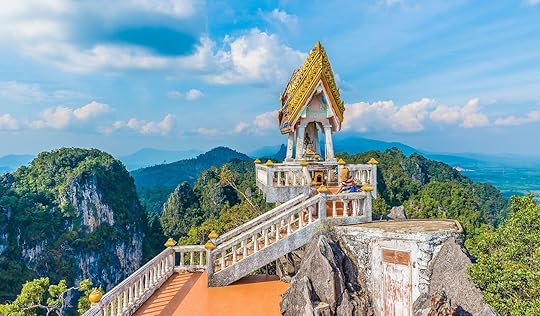
Local guide TK recommends visiting not just outdoor sites, but cultural sites like Tiger Cave Temple in Krabi, shown here. . Photo: Balate.Dorin/Shutterstock
Yutthana Budaded, my guide through the misty waters of Klong Root, shared how he benefited from the film shooting in Krabi. “I feel proud and grateful that our location was part of such a huge film, especially when I saw Klong Root featured in the movie.” Since it became known that the film would shoot in Thailand, “many people came to visit me and other filming locations,” he added. Beyond the film’s scenic locations in Krabi, he recommends that tourists explore the local markets and visit traditional fishing villages, and take the opportunity to attend a local festival or cultural performance. A visit to the temples or nearby natural sites like mangrove forests is also recommended, he says, to get a “deeper understanding of the spiritual and environmental connection the people have with their land.”
The exposure is also expected to encourage sustainable tourism and cultural exchanges, creating more jobs and spurring long-term growth in the tourism sector. A tour in Koh Klang, just a short boat ride from Krabi Town, includes the chance to learn about traditional longtail boat building, batik painting, and rice farming, all while supporting locals. In Krabi’s Ban Nai Nang, travelers can learn how local beekeeping is saving mangrove forests.
Where to stay in ThailandView this post on Instagram
A post shared by Avani+ Koh Lanta Krabi Resort (@avanikohlanta)
Travelers can get closer to Jurassic Park Rebirth’s iconic scenes and support Krabi’s residents by staying a few nights on their trip to Thailand.
The Thai-owned Avani Ao Nang Cliff Krabi Resort and Avani + Koh Lanta Krabi Resort share a four-night “Jurassic Paradise” package, including two nights at each resort, a kayak trip through Klong Root and snorkeling the crystalline waters of Koh Kradan—another site in the film. Themed wellness offerings like a lava stone massage or Age of Rebirth treatment utilizing local Thai botanicals are also included. The package runs through at least the end of November 2025.
For a luxury stay with a prime location between Krabi and Phuket, Anantara Koh Yao Yai Resort & Villas is a jungle-flanked retreat just 30 minutes by boat from two stunning sites featured in Jurassic Park Rebirth: Ao Phang Na National Park and Khao Phanom Bencha National Park. The property can also plan local fishing and island hopping excursions. 
July 11, 2025
Protests, Presidents, and Protection: 6 Wild Stories Behind America’s National Parks

The story of America’s national parks is one often told only by descriptions and superlatives — tallest, oldest, prettiest, most impressive. But for many of America’s 63 national parks, the history and origin stories are just as compelling as the landscapes and species they protect.
Behind many national parks are stories of grassroots activism and lifetimes of dedication. Sometimes, the process of making a place into a national park was a matter of convincing the most famous families in America to donate their fortunes, while other times, it was as simple as one conservationist writing a world-famous book. (And in the case of one park, it involved a sitting US president disappearing into the wilderness for a few days.) Behind every national park is at least one relentless individual unwilling to let government and corporations destroy the country’s most beautiful and important wild places.
Every national park is filled with fascinating stories, but the origin stories of the six parks below are truly some of the wildest in the system, involving presidents, first ladies, America’s richest families, a world-famous publication, Indigenous advocates, and even the relocation of entire towns and cities.
Redwood National and State ParksYosemite National ParkEverglades National ParkGreat Smoky Mountains National ParkAcadia National ParkGates of the Arctic National Park and PreserveRedwood National and State Parks (California)Established: 1968
Photo: Bob Pool/Shutterstock
Redwood National and State Parks protect the tallest trees on Earth. But the fact they still exist is thanks to a decades-long fight involving a world-famous National Geographic photo, and a helicopter visit from the First Lady.
By the 1960s, more than 90 percent of California’s old-growth coast redwoods had already been logged. Most of the remaining trees were on private land, and multiple efforts to create a park from organizations like the “Save the Redwoods” league had failed time and time again. But in 1963, National Geographic magazine published a now-iconic 15-page spread about the massive trees, with humans positioned along its trunk to show scale. Public outcry followed, and the image became a turning point in conservation history. It’s now one of the most iconic magazine covers in the publication’s history.
The public — and Congress — demanded action after the magazine hit newsstands, but logging unions and local officials in Northern California pushed back, saying that a national park would destroy the regional economy. But the tide had already turned, with some of the most influential people in the country working with the Save the Redwoods League to protect the 350-foot-tall trees.
In 1968, First Lady Lady Bird Johnson flew by helicopter into the redwood forests along the Klamath River. She toured the very grove where the photo had been taken (a place she later called a “cathedral of silence”), and offered her vocal support. Later that year, the creation of Redwood National Park was signed into law. Today, hikers can still visit the Tall Trees Grove, where the famous “Nat Geo tree” still stands.
In the years since, the park has been expanded, and is now co-managed between the National Park Service, and California State Parks. Combined, roughly 133,000 acres of deep forest and rugged coastline are protected, including about five percent that’s true old-growth forest.

To learn more about Redwoods’ founding while visiting, start at the Thomas H. Kuchel Visitor Center (just south of Orick, CA), for exhibits on the park’s creation, the fight to save the redwoods, and the 1960s conservation efforts that led to national park status, including the Nat Geo expedition. The nearby Hiouchi Visitor Center (in Jedediah Smith Redwoods State Park) and Prairie Creek Visitor Center also offer exhibits on logging history, redwood ecology, and the role of non-profit organizations like Save the Redwoods League. On the trails, both the Big Tree Loop and Lady Bird Johnson Grove, among others, have interpretive signage and self-guided walking tours on the NPS App with tons of historical and environmental information, and in the summer, frequent ranger program dive into the park’s cultural and ecological history.
Yosemite National Park (California)Established: 1890
Photo: cb_travel/Shutterstock
Yosemite was not the first national park in the US (that title belongs to Yellowstone), but it was the first place the federal government set aside specifically for preservation.
The effort began in the mid-1800s. When white settlers arrived in the Sierra Nevada, artists and scientists also began documenting Yosemite’s deep granite valleys and waterfalls. In 1864, during the Civil War, President Abraham Lincoln signed the Yosemite Grant. It transferred the Yosemite Valley (and nearby Mariposa Grove of giant sequoias) to the state of California for protection “for public use, resort, and recreation.” It was the first time in the country’s history that land was set aside specifically to be protected from private development.
But it didn’t have federal protection for many more decades. That push came largely from naturalist John Muir, who spent years lobbying Congress after seeing firsthand the damage caused by overgrazing and unregulated tourism and development in the Sierra Nevada. Though it sounds like something that could never happen today, in 1903, he took sitting President Theodore Roosevelt on a multi-day backpacking trip through the wilderness, sleeping on the ground and bringing just three park rangers with them for guiding and protection. Roosevelt later spoke fondly of the trip, saying it was what convinced him that the land needed to be protected.
In 1890, after decades of advocacy, Congress created Yosemite National Park to protect the surrounding wilderness (though the original Yosemite Valley and Mariposa Grove weren’t turned over to the federal government until 1906).
Today, Yosemite National Park spans more than 750,000 acres, and is one of the most well-known national parks in the entire world.

To learn more about Yosemite’s founding while visiting, start at the Yosemite Valley Visitor Center, where exhibits and the short film Spirit of Yosemite explain the park’s Indigenous heritage, early tourism, and the importance of the 1864 Yosemite Grant. Next door, the Yosemite Museum focuses on Miwok and Paiute culture, with rotating exhibits and traditional demonstrations. And across the park, you’ll find ranger talks and interpretive signage that offer more insight into the facets of Yosemite history.
Everglades National Park (Florida)Established: 1947
Photo: Francisco Blanco/Shutterstock
Everglades National Park protects one of the most complex and fragile ecosystems in North America. It’s a vast, swamp-type stretch of water stretching from Miami all the way to the northern part of the Florida Keys. Unlike most national parks, it wasn’t preserved for its grandeur and beauty. In fact, many Americans initially saw it as a worthless swamp.
That perception began to change largely because of one woman: Marjory Stoneman Douglas. She was a journalist and former suffragist who had covered South Florida’s rapid transformation for decades. She spent months traveling through the area by boat and on foot, bringing in scientists, Seminole and Miccosukee leaders, and local conservationists. She became convinced that the everglades weren’t a pointless swamp, but essential to Florida’s hydrology and environmental health.
In 1947, Douglas published The Everglades: River of Grass. It was a groundbreaking book that reframed the Everglades as a critically important slow-moving river nearly 60 miles wide. The book launched a national conversation and reshaped public understanding of the ecosystem. She described in detail the various microbiomes in the park, and how they were being rapidly destroyed, along with critical animal species.
That same year, after decades of campaigning from conservationists, Everglades National Park was formally established. President Harry S. Truman traveled from DC to Florida to dedicate it, calling it a national commitment to preserve “a unique segment of the American heritage.” It was the first national park in the US created to protect a critical biological system rather than scenic beauty — something Douglas was directly responsible for.
Douglas would continue advocating for the Everglades well into her 90s, often testifying before Congress, writing op-eds, and lobbying against development. She lived to be 108 and is still considered one of the most important environmental advocates in American history.

To learn more about the Everglades’ founding while visiting, head to the Ernest F. Coe Visitor Center near Homestead, loaded with museum displays and exhibits covering the park’s human and natural history. Through fall, winter, and spring, there are ranger-led programs at Coe, Shark Valley, and Flamingo, and from Shark Valley, there’s a guided tram tour with narration on the park’s political and ecological significance. Several trails, including the Anhinga Trail and Gumbo Limbo Trail, have interpretive panels that touch on early tourism, Indigenous presence, and Douglas’s campaign to shift public perception from “useless swamp” to protected national treasure.
Great Smoky Mountains National Park (Tennessee/North Carolina)Established: 1934
Photo: anthony heflin/Shutterstock
Great Smoky Mountains National Park is home to old-growth forests, salamanders, black bears, and some of the oldest mountains in North America. But getting it protected took more than an act of Congress: It took years of political wrangling, fundraising, and even a visit from then-President Franklin D. Roosevelt.
Like many parts of the US in the early 20th century, logging companies had cleared wide swaths of the southern Appalachian Mountains. Entire mountain slopes were clearcut, with entire towns built by logging companies of employees working in sawmills and on railways. It spurred early conservationists to take notice, fearing that if they’d be permanently destroyed if private companies were allowed to continue prioritizing personal economic gain over the shared public value of the lands.
But at the time, the Smokies were mostly private. So to create a national park, advocates would need to buy tens of thousands of acres. That effort was led in part by Willis and Ann Davis, a Knoxville couple who launched a grassroots fundraising campaign in the 1920s, and journalist Horace Kephart, who spent years living in the Smokies and writing about their ecological and cultural value. In 1926, Congress authorized the park — but it didn’t have any funds with which to actually buy the land.
To fill the gap, North Carolina and Tennessee each pledged $2 million. Additional support came from private citizens, local women’s clubs, the Rockefeller Family, and even local elementary school children who donated pennies at a time. To establish the park, it also involved moving entire communities like Cades Cove and Cataloochee, both of which are remembered within the park.
In 1936, organizers finally acquired enough land to form a continuous park, and it received federal protection. But it wasn’t until four years later that President Roosevelt stood on the Rockefeller Memorial at Newfound Gap between North Carolina and Tennessee, and formally dedicated the park.
Today, the park protects more than 522,000 acres and is the most-visited national park in the United States.

To learn more about the Smokies’ founding while visiting, join a ranger programs at Sugarlands, Cades Cove, or Oconaluftee. Many programs focus on the grassroots efforts to create the park, the role of the Rockefeller family, and the controversy around the forced removal of residents. The Rockefeller Memorial at Newfound Gap marks where President Franklin D. Roosevelt officially dedicated the park in 1940, and the Mountain Farm Museum at Oconaluftee Visitor Center preserves log cabins from around the region with information on 19th-century mountain life. You can also visit the Sugarlands Visitor Center near Gatlinburg, which has expansive exhibits on the wildly popular park.
Acadia National Park (Maine)Established: 1919
Photo: Heather Michael/Shutterstock
Acadia was the first national park created east of the Mississippi — and, even more interestingly, the first created using entirely donated land. It protects Maine’s rugged Atlantic coastline, granite peaks, and glacial lakes, but only exists because one person spent nearly 50 decades convincing his wealthy friends and associates to donate the land.
That man was George B. Dorr, a Bostonian who spent summers on Mount Desert Island and became alarmed by encroaching development. Along with a group of friends, he formed the Hancock County Trustees of Public Reservations in 1901, made up of other concerned citizens. It had one goal: to convince wealthy landowners, including famous families like the Rockefellers, Morgans, and Carnegies, to donate land before it could be logged or sold as smaller parcels. He lobbied Congress, and spent his own fortune to delay deals that could have made the land unavailable.
Finally, in 1916, President Woodrow Wilson created Sieur de Monts National Monument, made from land Dorr had sourced. Three years later, it was designated Lafayette National Park, but changed to Acadia in 1929, in reference to the region’s early French colonial history. During this time, donor and ally John D. Rockefeller, Jr., funded and constructed 45 carriage roads through the park, complete with granite bridges and stonework that still stands today, to allow access to the park for tourists while still keeping cars out. He also donated about 10,000 acres.
After establishing the park, Dorr continued to stay in the area, and lived in the park well into his 80s.

Acadia National Park History
To learn more about Acadia’s founding while visiting, At Acadia National Park, history is woven into both the landscape and the visitor experience. Begin at the Hulls Cove Visitor Center, where exhibits explain how local landowners, artists, and philanthropists—most notably George B. Dorr and John D. Rockefeller Jr.—helped establish the park through private land donations. The Carriage Roads, funded and designed by Rockefeller, are open to hikers and cyclists and still feature the original stone bridges and gatehouses. At Jordan Pond and Sieur de Monts Spring, interpretive signs explore Dorr’s conservation work and the park’s 1916 founding as Sieur de Monts National Monument, and the nearby Wild Gardens of Acadia highlight native plant species in the area.
Gates of the Arctic National Park and Preserve (Alaska)Established: 1980
Photo: NPS/Kyle Joly 2012/Shutterstock
Gates of the Arctic protects more than 8.4 million acres of Arctic wilderness with no roads, no trails, and no visitor centers. It looks much the same as it did 10,000 years ago — a landscape preserved not just for its wildness, but for the Indigenous communities that have relied on it for millennia.
The park’s story begins with Bob Marshall, a forester, writer, and early wilderness advocate who spent the 1930s exploring Alaska’s Brooks Range on foot. He was awed by its isolation and grandeur, and famously nicknamed two peaks — Frigid Crags and Boreal Mountain — the “Gates of the Arctic.” His travel memoirs helped shape the modern wilderness ethic: that some places should remain completely undeveloped.
But the park didn’t exist until decades later. In the 1970s, the construction of the Trans-Alaska Pipeline sparked a major debate over land use, Indigenous rights, and conservation. In 1971, Congress passed the Alaska Native Claims Settlement Act (ANCSA), paving the way for new protections. In 1980, the Alaska National Interest Lands Conservation Act (ANILCA) created Gates of the Arctic and more than 100 million acres of additional protected land.
Uniquely, the park preserves not just ecosystems but subsistence rights for Iñupiat and Koyukon Athabaskan peoples. Hunting, fishing, and gathering are legally protected — something almost unheard of in other U.S. national parks. Today, most visitors arrive by bush plane and rarely see another person. For those who do make the journey, it offers a rare glimpse of wilderness untouched by modern development.

Gates of the Arctic National Park and Preserve history
To learn more about Gates of the Arctic’s founding while visiting, you’ll actually need to be outside the park, as there are no roads, signs, or visitor centers inside the park itself. That said, there is a small Nunamiut Iñupiat village inside the park called Anaktuvuk Pass, where a cultural center and ranger station have exhibits on the history of the land. At the Morris Thompson Cultural and Visitors Center in Fairbanks, National Park Service exhibits share the park’s founding story, Bob Marshall’s expeditions, and the role of the 1980 ANILCA legislation. There are also cultural displays from Alaska Native communities and the lives of Iñupiat and Koyukon Athabaskans in the Brooks Range.
In Bettles (a fly-in village just south of the park) the Gates of the Arctic Visitor Center (open summer only) hosts ranger talks, provides trip-planning info, and has exhibits on Indigenous subsistence rights. 
Skyline-Altering Rockfall Strikes Grand Teton Over Fourth of July Weekend

Over the Fourth of July weekend, the Grand Teton’s iconic ridgelines changed in an instant. A major section of the Second Tower—a prominent formation on the Grand Teton itself—broke free in a dramatic rockfall event that triggered sustained instability across the mountain’s eastern face. For at least 48 hours after the initial collapse, climbers observed consistent, intermittent rockfall cascading from the debris field. The Jenny Lake Rangers, Grand Teton National Park’s elite rescue unit, confirmed the event likely occurred Saturday, July 5, and have issued warnings about ongoing hazards in the area.
In a separate but related event, a large boulder tumbled across the winter route to the Lower Saddle—a popular approach used by climbers summiting the Grand. While no injuries have been reported, the timing and magnitude of these events underscore growing concerns about mountain stability, particularly during summer’s volatile freeze-thaw cycles.
Rockfall is not new to the Tetons, but its frequency and scale have noticeably increased. The same Second Tower experienced a significant collapse in the fall of 2022, and climbers familiar with the massif report a rising trend of spontaneous breaks, even in seemingly stable zones.
View this post on Instagram
A post shared by Jenny Lake Rangers (@jennylakerangers)
The Jenny Lake Rangers attribute much of this activity to environmental changes—specifically, the cycles of freezing and thawing that expand cracks in granite and ultimately trigger failure. Still, they caution that rockfall remains “highly unpredictable.”
The Second Tower, specifically, is now a repeat offender. In September 2022, a significantly larger portion of the formation collapsed,” the Jenny Lake Ranges wrote in an Instagram post. “At this time, it is not known if the East Ridge climbing route has been impacted. A large debris field is visible from the valley on the Teepe Glacier.“
Climbers and hikers are urged to monitor ranger updates and make conservative decisions about route planning. Areas with fresh debris may remain unstable for days or even weeks. Routes like the Owen-Spalding and Exum—popular for summer ascents—may require updated assessments. For those considering a trip to the park, officials recommend checking the National Park Service website for alerts and speaking with rangers at the Jenny Lake Climbing Information Center before venturing into alpine zones. Helmets, conservative route timing, and updated maps are more essential than ever. While the Grand Teton remains a world-class climbing destination, this summer’s rockfall serves as a stark reminder that in the high alpine, landscapes can shift without warning—and experience alone doesn’t offer protection when the mountain decides to move. 
At This Vineyard-Laced Napa Valley Resort, Even the Spa Is in a Wine Cave

In Northern California’s Napa Valley wine region, there’s a 15-foot-tall bronze sculpture of a farmer crushing grapes. This figure (aptly known as the Grape Crusher) sits atop a small hill and overlooks vineyards belonging to the Meritage Resort complex. Spanning 36 acres, the estate consists of two properties where guests can stay: The Meritage Resort and Spa and Grand Reserve at the Meritage, which together make up one of the largest resorts in Napa Valley.
Staying at The Meritage Resort and Spa
Photos: The Meritage Resort and Spa
The Meritage Resort and Spa is part of The Meritage Collection, the umbrella behind two luxurious properties in California and a handful more spread across Arizona, Texas, and Hawaii. Despite being a luxury hotel in wine country, the newly imagined property in Napa Valley — which recently saw a $25 million renovation — is the perfect getaway for all types of travelers, from wine enthusiasts and couples to family vacationers and corporate groups. In fact, the resort is home to one of the largest meeting spaces in Napa Valley and Northern California at large. It has 44 venues with 80,000 square feet of event space and capacity for 1,000 people.
There’s certainly room for everyone. The Meritage Resort and Spa has 467 rooms and suites. Each room has Tuscan-inspired decor and design elements inspired by the earth, the sun, and the California sky. Of course, each room also comes with a welcome bottle of wine.
Different rooms and suites offer slightly different experiences. To start, you can opt for resort, pool, or vineyard views. If traveling with a larger group — or you prefer a home-away-from-home feel — you can opt for junior suites or studios, as well as one- or two-bedroom suites that come with full kitchens and outdoor spaces like patios or balconies.
Activities and amenities at The Meritage Resort and Spa
Photo: The Meritage Resort and Spa
Time spent among the vines represents some of the most precious moments guests can have at The Meritage Resort and Spa. One great way to get to know the property is by strolling the resort’s nine-acre hillside vineyards, which culminate at the Grape Crusher. You can do more than just walk the vineyards, though — the resort also hosts yoga sessions there.
Wellness features heavily in The Meritage experience. The resort’s spa, Spa Terra, is located 40 feet beneath the vineyards within the 22,000-square-foot Estate Cave. The moment you enter you’re transported to a serene bliss that you never want to leave. Treatments range from the Mother-To-Be Massage and the Himalayan Salt Stone Massage to the Arctic Berry Illuminate Facial, plus a long list of couples massages for those on romantic getaways. However, the treatments under the Cave Man section of the spa menu win for the most colorful names: the Cave Man Facial, Bourbon Bubbler Body Treatment, and Grape Crusher Massage.
The resort organizes a long list of wellness offerings beyond the spa, too. Guests can start their days with morning flow yoga, up the action with core fusion or barre classes, and re-center with guided meditations and healing sound baths. The resort also has both adults-only and family pools so that everyone can enjoy their vacation exactly how they imagined.
Some activities are open to both guests and the public. The Meritage Resort and Spa hosts signature wine events and other small events, like a Mother’s Day brunch, but is perhaps best known for two happenings: Merry Meritage and the Blue Note Concert Series. Come Christmas time, the resort transforms into a winter wonderland known as Merry Meritage, with a tree-lighting ceremony and the only outdoor ice-skating arena in Napa Valley. For those visiting during summer and fall, the Blue Note Concert Series is an outdoor event series that takes place on the lawn of The Village at Meritage (more on that in a second).
Dining and drinking at The Meritage Resort and Spa
Photos: The Meritage Resort and Spa
It stands to reason that a resort in the heart of a world-famous wine country would have great tasting experiences. The Meritage Resort and Spa does. Many of them start at The Village at Meritage, a common area with several different tasting rooms, an on-site brewery, the gourmet Fivetown Grocery, and a cooking classroom called the Food and Wine Center.
There are multiple dining options on site, as well. Take Ember Steak, the resort’s new steakhouse, which is now taking reservations. In addition to dry-aged beef, you’ll find seafood and sushi on the menu, along with hand-crafted cocktails and wine pairings (of course). At Olive and Hay — an Italian-inspired, farm-to-table restaurant that serves breakfast, brunch, lunch, and dinner — dishes are equal parts classic and creative. The Black & White Caesar is a good example, elevated with black garlic, squid-ink-infused dressing, and sweet onion focaccia breadcrumbs. Then there’s Crush Lounge, a modern bowling alley that serves an impressive food menu (think carnitas nachos or seared tuna salad) plus cocktails and boozy milkshakes.
For something quick, Blend Cafe is a go-to for all things coffee and pastries, while the Commons Bar in the lobby has you covered with drinks and bites like flatbreads and fancy fries.
Exploring Napa outside of The Meritage Resort and Spa
Photo: Rolf_52/Shutterstock
Napa Valley has five charming towns to explore. While the resort is located in the city of Napa, whose charming downtown is worth a visit, there’s more to see in American Canyon (“the gateway to Napa”), Yountville (home of the famous French Laundry restaurant), St. Helena (its own American Viticultural Area), and Calistoga (known for its spas and hot springs).
Off-property recreation ranges from hot-air balloon rides and bike tours to off-site wine tastings. Take a bike tour through wine country’s vineyards with Napa Valley Bike Tours, departing from Yountville, or get a different perspective aboard the Napa Valley Wine Train.
Getting to The Meritage Resort and Spa and around Napa
Photo: Asif Islam/Shutterstock
Most out-of-town visitors to Napa Valley visit via San Francisco, which is roughly an hour south of wine country by car if there’s not too much traffic. The Meritage Resort and Spa is located at the intersection of Highway 29 and Highway 221 on Bordeaux Way.
You’ll probably want to rent a car if you plan on driving from San Francisco and exploring the wider area once you get there. It’s possible to snag rideshares, shuttles, and public transportation in the five core cities, but it’ll take some extra planning to get around, and you may encounter limitations regarding where you want to go (and when).
If you plan on sticking closer to home — at least, your home while you’re in town — The Meritage Resort and Spa provides shuttle services to and from downtown Napa. 
July 9, 2025
TSA Says Travelers Can Keep Their Shoes On After 20 Years of Bare Feet at Airport Security

Travelers across the U.S. can finally keep their shoes on at airport security checkpoints, marking an immediate end to a nearly two-decade-long policy. Announced by Kristi Noem, Secretary of the Department of Homeland Security, on July 8, the Transportation Security Administration (TSA) no longer requires passengers to remove their footwear during screening, effective immediately.
This decision follows substantial advancements in security technology, underscoring TSA’s confidence in its evolved “layered security” approach. According to USA Today, Secretary Noem cited enhancements such as advanced scanners, increased staffing, and improved identity verification through REAL ID compliance, affirming that the existing procedures adequately ensure traveler safety without mandatory shoe removal.
The original shoe removal policy dates back to an attempted terrorist attack in December 2001, when Richard Reid, known as the “shoe bomber,” tried to detonate explosives concealed in his shoes during a flight from Paris to Miami. Initially voluntary, shoe removal became an official TSA requirement in 2006, following intelligence indicating persistent threats and an attempted liquid explosives plot.
Avoiding bare feet or socks on dirty airport floors was once a benefit only for TSA PreCheck members. Despite the policy shift, TSA PreCheck continues to hold appeal for frequent travelers. Members of the trusted traveler program, who undergo background checks and pay an application fee, will still enjoy other conveniences, such as keeping liquids and electronics packed during screening.
Secretary Noem also noted that Homeland Security is actively reviewing other TSA rules — such as removing belts, coats, and certain items from bags — for potential future adjustments, provided these changes can be safely implemented. Travelers may still occasionally need to remove their shoes if flagged for additional screening. 
Going to the World Cup in Los Angeles? Book One of These Airbnbs Near SoFi Stadium

Soccer fans are counting down the days until the 2026 FIFA World Cup, wchich kicks off in June. The first match in Los Angeles takes place June 12 at SoFi Stadium. For those fortunate enough to attend in person, it’s time to finalize travel plans, including booking an Airbnb near SoFi Stadium. Here are the best Airbnbs in Inglewood, California, that are within walking distance of Sofi Stadium and nearby to other popular California attractions like The Forum, Disneyland, or Venice Beach.
We hope you love the Airbnbs near SoFi Stadium we recommend! Just so you know, Matador may collect a small commission from the links on this page if you decide to book a stay. Listed prices are accurate as of the time of publication.
Scandinavian-mod guesthouse near LAX and SoFi Stadium Photo: John Doe/Shutterstock
Photo: John Doe/Shutterstock Photo: John Doe/Shutterstock
Photo: John Doe/Shutterstock Photo: John Doe/Shutterstock
Photo: John Doe/Shutterstock Photo: John Doe/Shutterstock
Photo: John Doe/ShutterstockSee more photos
Four guests, two bedrooms
Price: $190 per night
Private guest suite near LAX, SoFi, and Intuit Dome Photo: Airbnb
Photo: Airbnb Photo: Airbnb
Photo: Airbnb Photo: Airbnb
Photo: Airbnb Photo: Airbnb
Photo: AirbnbSee more photos
Three guests, one bedroom
Price: $134 per night
Private house with pool near LAX, SoFi, and Intuit Dome Photo: Airbnb
Photo: Airbnb Photo: Airbnb
Photo: Airbnb Photo: Airbnb
Photo: Airbnb Photo: Airbnb
Photo: AirbnbSee more photos
Eight guests, four bedrooms
Price: $395 per night
Luxury apartment near SoFi Stadium Photo: Airbnb
Photo: Airbnb Photo: Airbnb
Photo: Airbnb Photo: Airbnb
Photo: Airbnb Photo: Airbnb
Photo: AirbnbSee more photos
Four guests, one bedrooms
Price: $387 per night
Spacious 3BR home near SoFi Stadium Photo: Airbnb
Photo: Airbnb Photo: Airbnb
Photo: Airbnb Photo: Airbnb
Photo: Airbnb Photo: Airbnb
Photo: AirbnbSee more photos
Six guests, three bedrooms
Price: $499 per night
Modern guesthouse near SoFi and LAX Photo: Airbnb
Photo: Airbnb Photo: Airbnb
Photo: Airbnb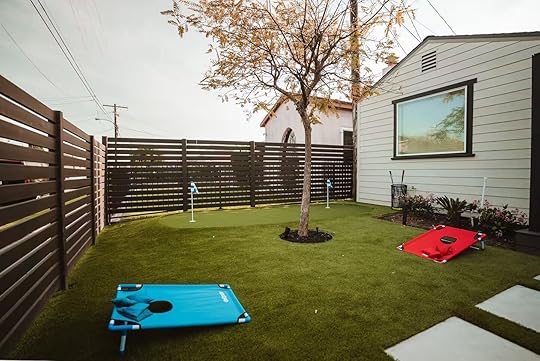 Photo: Airbnb
Photo: Airbnb Photo: Airbnb
Photo: AirbnbSee more photos
Five guests, two bedrooms
Price: $417 per night
Home within walking distance to SoFi Photo: Airbnb
Photo: Airbnb Photo: Airbnb
Photo: Airbnb Photo: Airbnb
Photo: Airbnb Photo: Airbnb
Photo: AirbnbSee more photos
Five guests, two bedrooms
Price: $387 per night
Cozy bungalow steps from SoFi Stadium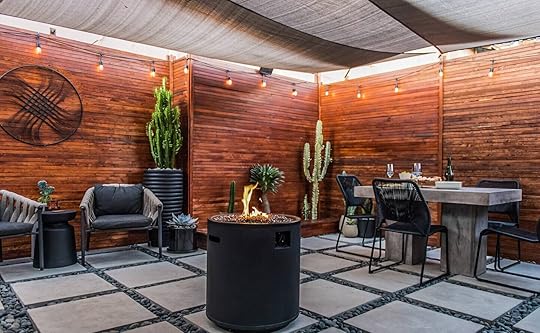 Photo: Airbnb
Photo: Airbnb Photo: Airbnb
Photo: Airbnb Photo: Airbnb
Photo: Airbnb Photo: Airbnb
Photo: AirbnbSee more photos
Four guests, two bedrooms
Price: $399 per night
SouthBay Haven 10 mins from stadium Photo: Airbnb
Photo: Airbnb Photo: Airbnb
Photo: Airbnb Photo: Airbnb
Photo: Airbnb Photo: Airbnb
Photo: AirbnbSee more photos
Four guests, two bedrooms
Price: $383 per night
More like thisEpic Stays9 Dreamy Oceanfront Airbnbs Up and Down the California CoastJuly 8, 2025
Italian islands you haven't heard of

When people think of Italian islands, glamorous isles like Capri just off the Amalfi Coast may come to mind. Then there are the sizable Sardinia and Sicily. While all of Italy’s islands are stunning, I’m especially fond of the smaller islands mostly unknown outside of Italy — each offering a glimpse into Italian life away from the spotlight, with facinating traditions, histories, and landscapes worth discovering.
Literally dozens of islands dot Italy’s coastlines, each with its own distinct personality. Some offer hiking trails that wind past medieval towers or volcanic craters; others have beaches accessible only by foot and remain largely undeveloped. Here’s my favorite underrated Italian islands, perfect for travelers seeking experiences off the typical tourist trail.
We hope you love the spaces and stays we recommend! Just so you know, Matador may collect a small commission from the links on this page if you decide to book a stay. Listed prices are accurate as of the time of publication.
Ponza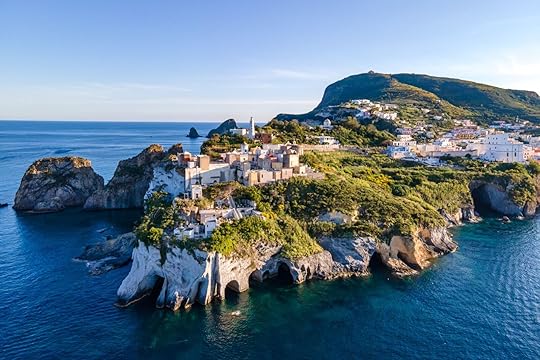
Photo: Matteo_Ciani/Shutterstock
How to get there: Fly to Rome, then take a train to Formia and a ferry (two hours) to Ponza.When to go: May to mid-June and September to early October for great weather and fewer crowds; July to August is peak season with summer festivals, music events, and lively local celebrations.Ponza, located off the west coast of central Italy, gets plenty of summer vacationers from Rome. Despite filling up with so many Italians in warmer months, Ponza sees few foreigners. Its two main towns are the port of Ponza, with its various pastel-hued buildings, and La Piana, a village on a ridge high above the water.
You can reach beaches near the port on foot, walking under ancient Roman tunnels that are still in use today — but a better option is to take the ferry to such picturesque coves as Spiaggia Di Frontone. The ferry shuttles back and forth from Ponza’s main town all day, but at 6:00 PM, it unloads dozens of teens and twenty-somethings onto the shore just as the sun works its way behind the tall cliffs lining the beach. Families take the cue and board the ferry back to port as a DJ starts spinning ever-louder tunes — turning Frontone Beach into a packed, late-night dance party.
Ruins of ancient Romans’ summer villas exist throughout Ponza, and scholars believe that the island was featured in the Ancient Greek epic The Iliad. Legend has it that the cave where the siren Circe entrapped Odysseus is on the west side of the island, but it’s hard to reach. It might be easier to take a long swim from Frontone to the Grotta degli Smeraldi, another beautiful sea cave.
Where to stay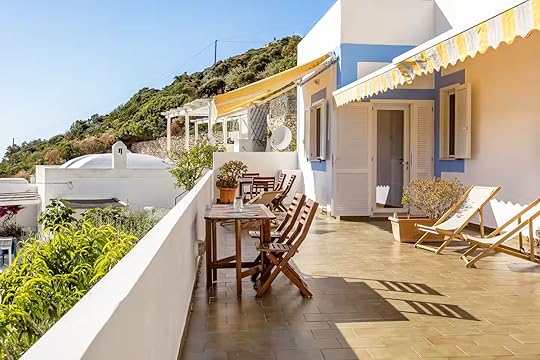
Photo: Airbnb
See more photosPonza has plenty of Airbnbs to choose from, including this cozy suite ($104 per night) in Le Forna, with a queen bed, daily cleaning, and a private terrace overlooking Cala Feola with sunset views toward Palmarola Island. It’s an ideal spot for couples wanting easy access to beaches, rocky coves, and casual seaside dining. Another option nearby is a studio apartment ($106 per night) set just above Ponza’s Natural Pools. It’s got a spacious shared terrace perfect for dinners at dusk, and you’re only a quick walk — 10 minutes down scenic stairs — from swimming spots like La Caletta. Both Airbnbs put you right in the heart of Ponza’s quieter side, exactly where you want to be.
Tavolara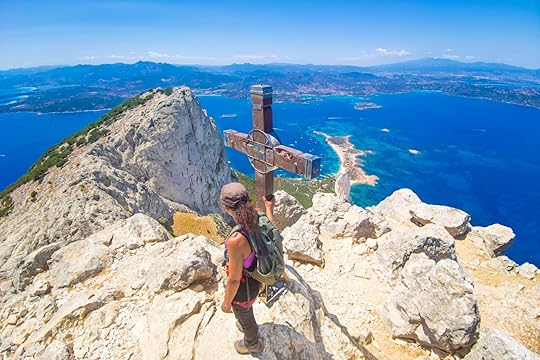
Photo: ValerioMei/Shutterstock
How to get there: Fly to Olbia Airport (Sardinia), drive about 20 minutes south to Porto San Paolo, then take a quick ferry (25 minutes) to Tavolara.When to go: June to September for warm, sunny weather and frequent ferries; July hosts the Tavolara Film Festival and is the busiest month.This three-mile-long sliver of land, just off the northwest coast of Sardinia and reachable by ferry, is the most unusual island on this list. It proclaimed itself a kingdom in the late 1800s and was recognized as such by the former King of Sardinia. But even members of the same “royal” family couldn’t agree on whether the so-called world’s smallest kingdom should remain one. One of them left Tavolara for Italy upon her death in 1934, though her nephew claimed to still be regent. Today, the owner of the island’s only restaurant still claims the throne. However, none of that really affects your visit — the open-air summer restaurant is a nice spot for a drink, and the beach in front of it is the perfect place for a long swim.
Tavolara, which has just a few full-time residents, is essentially a very tall peak, housing NATO radio equipment, and a flat stretch extending out from it. That stretch has a pleasant walking path through protected dunes leading to snorkeling spots and a petite beach at the end. I recommend sticking to Tavolara’s flat zone. You could try to hike up in the direction of its 1,854-foot peak, as I did, but the mountain eventually gets too steep, and the trail gives way to ropes dangling down sheer limestone walls hundreds of feet above the sea — with none of the safety gear you’d expect in a designated rock-climbing area. You can’t go much further, as that part of the island is off limits to civilians.
Where to stay
Photo: Airbnb
See more photosPorto San Paolo is the perfect jumping-off point for exploring Tavolara — and there are a couple Airbnbs worth checking out. If you’re traveling as a family or with another couple, this penthouse apartment ($411 per night) hits the mark, with two bedrooms, two bathrooms, and three terraces — including one facing Tavolara itself. It’s only a short drive from the best beaches in the area like Cala Brandinchi and Lu Impostu, and past guests rave about sunrise breakfasts and sunset wine sessions overlooking the sea. Another option is this villa ($1,700 per night), a spacious retreat sleeping eight guests, featuring a private pool set in lush gardens with stunning views over Tavolara. You’re close to Porto San Paolo’s restaurants, bars, and beaches, and under a mile from the shore if you’re eager for a swim right away.
Aeolian Islands
Photo: funkyfrogstock/Shutterstock
How to get there: Fly to Catania Airport (Sicily), take a two-hour transfer to Milazzo, then a hydrofoil (1.5 hours), or ferry (three hours) to Lipari or other islands.When to go: April to June and September to October for mild weather and fewer tourists; June to August is peak season with lively nightlife and festivals like the Salina Caper Festival.Some consider these seven islands off the northeast coast of Sicily to be the loveliest of all the Italian islands, and they may well be ones that you’ve actually heard of. They range from dry Panarea to green, vine-studded Salina. There is also Vulcano, where you can walk alongside a crater still discharging sulfurous gases, and Stromboli, which is actually a dramatic, conical volcano emerging from the sea. Guided hikes take you near the top of Stromboli, one of Italy’s three active volcanoes, as the sun goes down, so you can watch it spewing its fiery red contents into the night sky.
Panarea, the second smallest of the islands, is also the poshest, attracting to its inlets the mega-yachts of the world’s super-rich. No cars are allowed here, which is nice, but beyond walking on paths to its pristine beaches, there’s not much to do. I recommend Salina, where the volcano has long been dormant and tiny farms, vineyards, and forests make the island lush and green. It has several great restaurants where you can enjoy Sicilian-inspired dishes. After dinner, order a glass of the sweet Malvasia wine.
Where to stay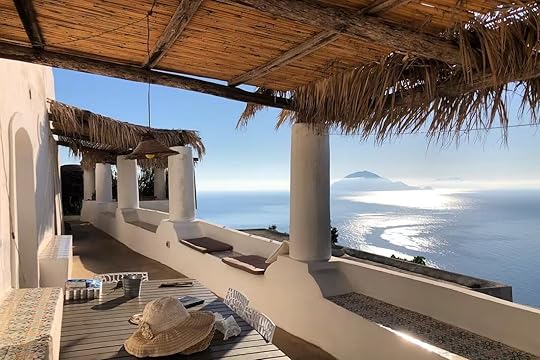
Photo: Airbnb
See more photosThe Aeolian Islands offer some pretty unforgettable places to stay — like this traditional hillside home ($323 per night) on car-free Alicudi. Called “Gil’s Dream,” it’s a split-level retreat that fits six guests comfortably, featuring a large terrace with bamboo pergolas and stunning views of the Mediterranean. You’ll need to be okay with a scenic 25-minute walk up stone steps to reach it, but the atmosphere is worth the climb. Over on Vulcano Island, there’s an expansive villa ($938 per night) in the leafy Vulcanello area, just a short stroll from a black-sand beach. Ideal for larger groups, it comfortably sleeps 14 guests, with seven bedrooms — each with its own bath — and sits in a lush, 5000-square-meter garden, with a seasonal pool, hot tub, and shady veranda.
Traveling to Italy? Check out Matador’s Italy accommodations guides: The 10 Dreamiest Islands in the Mediterranean, and Where to Stay on Each 14 Stunning Airbnbs in Sicily That Will Take Your Breath Away The 25 Dreamiest Airbnbs in Italy These 7 Lake Como Hotels Are What Italian Dream Vacations Are Made Of Lake Como’s Hotel Royal Victoria Is A Must-Stay In Northern Italy Dickie’s Extravagant White Villa in ‘Ripley’ Is Actually an Airbnb That You Can Rent 9 Best Airbnbs to Soak Up Summer in Italy Maddalena Islands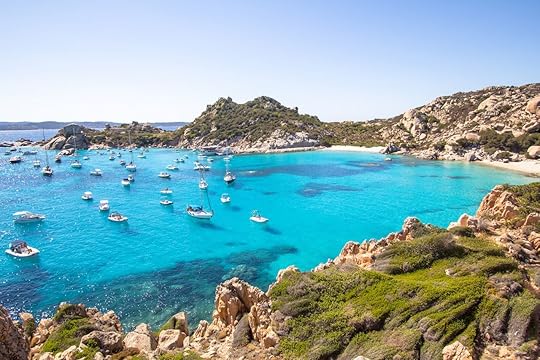
Photo: D.Bond/Shutterstock
How to get there: Fly to Olbia Airport (Sardinia), drive about 45 minutes north to Palau, then take a short ferry (15 minutes) to La Maddalena.When to go: May to September for warm weather, swimming, and boat trips; July to August is busiest with summer festivals and more visitors.The seven Maddalena Islands are located just off the northeast corner of Sardinia. With the exception of the namesake island, Maddalena, most of them feel rugged and remote with quiet coves overlooking turquoise water — and hardly a soul in sight. One reason the isles are still relatively uncrowded is that the US Navy had a presence here until about a decade ago. So, with NATO support and US dollars flowing in, the islands didn’t need to promote themselves to tourists. But the Maddalenas are now open to visitors, so I definitely recommend you get there.
The Maddalena Islands offer you the best of both worlds. The main island of Maddalena, where nearly all of the archipelago’s residents live, is a lively city with shops, cafes, and a hopping nightlife. The other islands are quiet and rugged. A two-minute drive across a bridge from Maddalena takes you to Caprera, which has a wee village with two museums and not much else. Caprepa is more like a state park. You can drive to hidden beach coves that have no commerce save a lovely restaurant for a languid, post-beach lunch. Boats take you to the other islands, like Spargi and Budelli. Budelli is famous for its Spiaggia Rosa, a beach with sand tinted pink from the local marine life. The smaller Razzolli, Santo Stefano, and Cala Santa Maria round out the Maddalena island list.
Where to stay
Photo: Airbnb
See more photosThe Maddalena Islands are best experienced by basing yourself right near the water — like at this impressive waterfront villa ($1,231 per night) on La Maddalena. The four-bedroom home feels like a private retreat, with a panoramic veranda overlooking Caprera Island, multiple sunbathing terraces, and direct sea access via your own path. Inside, you’ve got luxury touches like king-sized beds, a modern kitchen, and generous living areas. If you’re traveling in a smaller group, there’s also a villa ($540 per night) in the exclusive Villaggio Piras area, offering postcard-perfect views of Caprera. The villa sleeps six, with three comfortable bedrooms, private sea access via a resident-only dock, and a large veranda ideal for outdoor meals overlooking the water. Both properties offer easy access to La Maddalena’s shops, cafés, and beaches, and place you perfectly to explore the quieter, nearby islands by boat.
Capraia
Photo: robertonencini/Shutterstock
How to get there: Fly to Pisa Airport, travel about 40 minutes to Livorno, then take a ferry (2.5 hours) to Capraia.When to go: May to September for hiking and swimming in warm weather; October hosts the Totano Festival celebrating local squid fishing.Italian brochures bill Capraia as Italy’s isola selvaggia, its wild island. It’s the farthest north of the islands on this list, located just off the northern tip of French island Corsica. Capraia has only 300 full-time residents, and most of the five-mile-long island is in fact protected national park. Its lone paved road is a half-mile stretch that connects its only two towns, which are known as the port and the village.
Unlike other Italian islands, where the focus is on beachy activities like lounging, swimming, and snorkeling, many visitors to Capraia come to hike. You can walk short coastal paths and take dips in the sea or head up to Capraia’s guard towers, which were erected in the Middle Ages to guard against invading pirates. A popular trek is the hike to the Zenobito Tower at the uninhabited south end of the island.
Where to stay
Photo: Airbnb
See more photosIf you’d rather stay on the mainland and hop over to Capraia by ferry for hiking and squid-spotting, Livorno has a couple of standout options. For a classic Tuscan experience, there’s a spacious apartment ($303 per night) set in a 19th-century villa complex just outside town, with a rooftop terrace, a large historic park, seasonal pool, and tennis court you’ll share with local residents. It works well for families, with four bedrooms and a kitchen stocked with all the basics — plus you’re about 10 minutes’ drive from the ferry terminal. For something more refined, there’s a bright, garden-facing loft ($780 per night) inside a historic residence near the coast. It’s set up for two people, with a glass-walled dining area, air-conditioned living room, and a peaceful patio that feels worlds away from the city.
Pantelleria
Photo: Leone Von Dizic/Shutterstock
How to get there: Fly to Palermo Airport (Sicily), then take a short flight (45 minutes) or an overnight ferry from Trapani to Pantelleria.When to go: May to October for sunny weather and outdoor activities; September for the Passito di Pantelleria Festival celebrating the island’s famous sweet wine.This little island in the strait between Sicily and Tunisia houses the villas of such chic Italians as Giorgio Armani, as well as boutique, luxury resorts. Pantelleria is a pretty new volcanic island, geologically speaking, and as such doesn’t have white-sand beaches. It does have a mud beach, though. At Lago di Venere, a protected lake on the north shore of the island, you can cover yourself in mud, let it dry for some minutes, and then rinse off to feel renewed and refreshed.
With its blocky white buildings, Pantelleria looks more North African than Italian and is in fact only 40 miles north of Africa. Colombian author Gabriel Garcia Marquez once marveled that Pantelleria was the best place to admire the moon and gaze at the lighthouses on the African coast. You may find a casual eatery serving North African dishes like couscous — but, despite the nearness to Africa, most of Pantelleria’s restaurants serve Italian fare with an emphasis on wonderfully fresh seafood.
Where to stay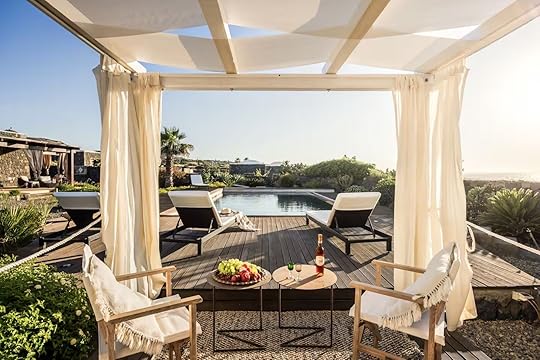
Photo: Airbnb
See more photosPantelleria’s rugged coastline and ancient dammusi — traditional stone houses with thick walls and domed roofs — make it feel more North African than Italian, and there are a couple of great Airbnbs where you can settle in and take it all in. One option ($813 per night) sits just under a mile from Bue Marino’s coves and comes with a private pool overlooking the open sea, plus a garden planted with Mediterranean shrubs. Inside, you’ll find two airy bedrooms, each with its own bathroom, a kitchen ready for seafood feasts, and a living room filled with natural light. For something simpler but still atmospheric, there’s another dammuso ($352 per night) surrounded by vineyards and olive trees in the northeast part of the island. This place has a pool, a sun terrace with views across the strait, and even an outdoor kitchen with a wood oven. 
These Key West Vacation Rentals Combine the Best of Hotels and Airbnbs

Growing up in Florida, Key West was an ambitious day trip when my family had guests. As much as I love beach trips, I never understood traveling that far when we had diverse, amenity-packed beaches in Miami and Fort Lauderdale. During a recent stay at Lunara Bay, however, I was quickly reminded why Key West is exceptional.
It starts with the journey. Both the southernmost city in the contiguous US and one of the southernmost islands in the Florida Keys, Key West is connected to the mainland via the scenic Overseas Highway. Along the way, you’ll drive across the Seven Mile Bridge, which runs parallel to a 2.2-mile section of the original bridge that’s been converted into a pedestrian and bicycle path connecting Marathon to Pigeon Key.
I flew into Key West this time, which felt like flying into the Caribbean. The small international airport makes travel easy, from dealing with your bags and renting a car to sipping cold drinks in transit. Adding to my smooth arrival, the Lunara Bay team had texted me by the time I landed, with a driver letting me know he’d arrived and where to find him — a modern alternative to a chauffeur holding a sign with my name on it.
This, followed by proactive communication about the house and room codes, set the tone for my stay in a Lunara Bay vacation rental.
Hotel-like service meets Airbnb-like digs
Photo: Neha Shah
Lunara Bay is just under five miles from the airport, promising equally easy access for those relying on rideshares or rental cars rather than a pickup service. When I arrived in the residential neighborhood housing the luxury rentals, I smiled at the contrasts — peacocks cooed and cawed while I oohed and aahed as the homes came into view.
My enclave, a set of four homes, was quiet. I was thrilled to see the multi-story home with the backdrop of a blue sky and a hint of waterways. I was slightly dismayed at the entry — stairs to the main floor and first floor of the home — but I was made aware of this in advance, and I travel light: a rolling carry-on and a weekender bag that doubles as a beach bag, ideal for carrying essentials while exploring during the day.
These luxury homes, all with views of the water, have a lot of appeal for travelers: your own pool and hot tub, plenty of patio space for outdoor meals, and kitchens outfitted inside and outside for a chef (or your group) to enjoy simple or multi-course meals. Foosball, table tennis, hammocks, and a fire pit complete the scene to beckon those intent on reveling in relaxation at a home away from home.

Photo: Neha Shah
Before my stay, I wondered what would be different about Lunara Bay compared to an upscale beach vacation rental or timeshare. For one thing, sustainability-minded guests will appreciate that all of Lunara Bay’s homes are new (almost entirely constructed by local Keys companies) and therefore outfitted with modern, energy-efficient mechanical systems, as well as astroturf that cuts back on water usage, maintenance, and agricultural chemicals. But the balance between service and privacy is probably the biggest difference.
Where Airbnb has superhosts and bookable experiences, Lunara Bay has Guest Experience Managers (GEMs). Airbnbs provide guests with assurances of reliability and responsiveness, plus peace of mind through the consistency of previous guests’ experiences, from reservations to questions throughout the stay. This is helpful to know before you book to establish a higher level of trust with your host. Lunara Bay’s GEMs add a layer of nuance to the experience, with a dedicated individual and team managing your stay in a concierge-like capacity.
GEMs can assist with planning, both before and during your stay, yet generally remain invisible like an Airbnb host. It’s the best of both worlds: You can enjoy your visit without interfacing with traditional hotel staff while still being supported by an expert team if you have any questions or a wish list.
An accommodation model that’s ideal for groups
Photo: Neha Shah
This is particularly significant given the many markets to which Lunara Bay appeals. Brides, for example, or anyone celebrating a special occasion, will appreciate having a GEM to handle additional services — finding a local bakery, booking an excursion, recommending a private chef, having gift baskets ready for guests on arrival, etc. You can incorporate add-ons before and throughout your experience, a key benefit for those traveling with a group for an event or function.
The benefits of a Lunara Bay stay extend to pretty much anyone, however. That not only includes groups — such as families, friends, corporate retreats, or bachelor and bachelorette parties — but also couples or remote workers who’ll appreciate staying in an environment that’s conducive to productivity, with the option to take breaks as needed and to stay as few as three days or longer.
I had the opportunity to visit many of the Lunara Bay homes, not just the Starboard, where I stayed. Each was slightly different in layout, but they all had the benefit of having a few homes within close distance so you can visit with those in your group. I could envision sharing a house with my immediate family or best friends while vacationing with a wider group staying in the homes nearby — say, visiting their pool or having dinner in one home while having a suite for me-time as needed.
Inside Starboard, a Lunara Bay home
Photo: Neha Shah
Starboard, like the other Lunara Bay homes, is designed tastefully, with earth tones that aren’t muted but offer subtle nods to sand, surf, and sky. Warm latte colors and a variety of blues tones — robin egg, cornflower, and cyan — are inviting but don’t dominate the atmosphere of the homes. Varied furniture provides different lounging options in the living area, including roomy circular seats that allow you to hug a pillow while swiveling to see the water, talking to someone in the kitchen, or viewing the bookshelf to scan for a beach read. Modern appliances and spacious dining areas, inside and outdoors, are a chef’s dream — and therefore a guest’s dream.
My room allowed for as much light or privacy as I needed. The king bed, comfortable pillows (not just the decorative kind that you can’t sink into), and appealing fragrance of the refillable lotion and body wash all added to the luxuriating and Zen-like hints reminding me to relax and allow myself to fully immerse into the Lunara Bay philosophy: life on idle time.
The group of creative professionals I was traveling with appreciated the little details, from the questionnaire we got in advance asking if we’d like the home stocked with any favorite snacks (not included in the rental rate) and beverages to the s’mores basket of goodies ready for a first-day arrival by the firepit. We took advantage of the organized transportation, which made it easy to go on excursions and explore without having to worry about parking or driving.
The home serves as an attraction itself. Since I had a few days, I found a balance in spending time in the pool and exploring Key West with a local friend who generously shared her favorite places to grab drinks, sit and watch the sea, eat, listen to music, etc. On one occasion, I happily traded the pool’s warm waters for a sunset sail with my housemates, complete with a sandbar excursion.

Photos: Neha Shah
Key West shines, even in the rain, so although there were a few showers during our time on the boat and at dinner, we were lucky enough to watch it until they passed, under safe cover. Lunara Bay partners with Brightwild, a travel platform centered around “personalized experiences and standout stays,” to facilitate excursions. This served as an extension of the sanctuary feel that the home provided — being in the water, without any activity beyond the 360-degree view, watching the blues and greens merge into each other while seeing the warm sand below.
I was happy to return to the cocoon to find the private chef preparing our meal. The dress code was as casual or as dressy as we wanted (layering athleisure apparel with the Lunara Bay robe wins for best-dressed for a cozy dinner prepared at home by a private chef).
Exploring Key West
Photo: Neha Shah
I split my time in Key West between Lunara Bay and the city itself. Starboard provided the necessary sanctuary for a genuine beach vacation. Key West provided the necessary social activities for a beach escape.
I spent time with a friend who lives locally. We compared notes on her favorite spots in Key West and the places I visited during my stay. Our group had lunch at Thirsty Mermaid, which is known for fresh catch and locally sourced ingredients. It’s a good location to walk around and see local art galleries, a wine shop, and the serene Key West Butterfly and Nature Conservatory. We capped our local walk with the best way to spend an afternoon: Louie’s Backyard. And what a backyard — the end of the road, the southernmost point, and the ocean.
We ate at Dorada — part of Casa Marina Key West, Curio Collection by Hilton — for dinner outside, with soft lighting and a few good options for vegetarians like myself. My local pal highly recommends Roostica for the pasta and starters. As locals, her family frequents this place as their go-to for Italian food. Another night’s meal was at Tavern N Town, with an excellent table in view of the chefs at work. It was another night of good drinks (Coco-jito) and food, including the shishito peppers, pizza, and the Tavern salad (white balsamic vinaigrette gives this salad a winning taste).
My local connection reminded me that the perception of Key West — all bars and no culture or good food and drink — is not entirely true. Key West offers theater, museums, water sports, and a range of local dining and drinking options. Between cozying up in Starboard and experiencing the broader destination, my time at Lunara Bay gave me exactly what I was seeking: life on idle time, my way, with all the indulgences for an idyllic stay. 
Chaotic, Slow, and Delayed: My First Southwest Flight Without ‘Bags Fly Free’

When Southwest Airlines announced in March 2025 that it would get rid of its famous “bags fly free” policy, move to assigned seating, and explore the possibility of a first-class section, it marked the end of an era. The changes seemed unthinkable for an airline that built its reputation on speed and simplicity, and signaled a shift away from trying to differentiate itself. In trying to compete with legacy carriers like United, Delta, and American, Southwest formally abandoned what had once set it apart.
It probably wasn’t a surprising announcement, but it did raise questions about how it would impact Southwest’s business model. For decades, Southwest had succeeded by offering fast turnarounds at smaller airports, avoiding major hubs, and connecting cities for direct flights, rather than offering extended trips with connections. It was more of a point-to-point model, rather than an airline you’d fly for a multi-leg trip with layovers. It was able to maintain that model by having quick turn around times, assisted by quick boarding processes. Unassigned seats and “bags fly free” were a branding tool, but also key to a system designed to keep things moving.
I flew Southwest for the first time after some of the changes went into effect, though assigned seating doesn’t start until 2026, meaning flights now have a double whammy of too many bags and people vying for the best seats available.
After flying, I’m not sure the airline can survive the transformation — at least without sacrificing the goodwill and reputation it’s spent years building.
What my flight was like
Photo: RebeccaDLev/Shuttrstock
On July 6, I boarded a Southwest flight from Reno to San Diego, a 90-minute route I’ve flown dozens of times to see my inlaws. It’s one of the few direct options between the two cities, and for years, Southwest has been the only carrier to serve it. But almost as soon as I arrived at the gate, the impact of the new bag policy became clear.
Nearly every passenger had both a roller bag and a large “personal item”—a backpack, duffel, or overstuffed tote. The boarding area was crowded, loud, and tense. Intercom announcements reminded passengers in boarding group C that they’d likely need to gate-check their bags. Others warned that only standard-sized carry-ons would fit in the overhead bins, not bags with expandable zippers. But no one seemed to listen. Or care.
Once on board, it was obvious that enforcement was minimal. Many bins were already jammed with oversized bags turned sideways — exactly what they warned against — taking up twice the space. Passengers moving toward the rear of the plane quickly discovered there was no room left. The result was a chaotic bottleneck as people doubled back in search of space, while flight attendants tried to coordinate the mess. They asked passengers to place bags under their seats, pleaded with others to rearrange luggage, and intervened when arguments broke out over bin access.
The atmosphere was tense. The crew sounded exhausted and short-tempered. I watched several passengers forcibly rearrange someone else’s bag to make room for their own, snapping the bin door shut with brute force that made me think the clasp was going to break.

Photo: Surachet Jo/Shutterstock
As more passengers boarded what was to be a completely full flight, the situation only got worse. Every aisle seat required someone to stand up so another could squeeze into the middle, further delaying boarding. Announcements became more condescending by the minute—reminders to be kind to one another, phrased like warnings from a high school principal. One ended with: “Thank you to the eight of you out of 135 who are listening.” (Judging by the groans around me, it was more than eight).
Our departure time came. Our departure time went. Soon, flight attendants were looking for the owner of a mysterious green bag. Eventually, they explained: someone had removed a bag from the overhead to make room for their own, and in the process, the displaced bag had made its way to the front of the aircraft, where it was gate-checked without proper tagging.
However, inside that bag was a passenger’s essential medication, and under TSA protocols, gate-checked bags can’t be brought back onto the plane after being removed. The passenger would be allowed to go claim it, but then wouldn’t be allowed to reboard. That left the passenger with a tough choice: fly without the medication or deplane and wait for a different flight. They chose to fly, but were apparently stressed and tense for the duration.
In the end, we departed about 35 minutes late. By today’s standards, that’s not catastrophic. But the mood on board suggested something deeper than a single delayed flight. The crew was visibly frayed and passengers irritable. And the chaos of boarding seemed to hint at a larger breakdown in the airline’s core values. If this flight is any indication, the skies are no longer filled with the “Southwest Love” that once set the airline apart. 
Universal Epic Universe Just Opened. Here’s What to Know.

After a quarter-of-a-century wait, Orlando has cut the ribbon on a brand new amusement park – and it promises to be the most “epic” yet. Universal Epic Universe is a quintet of immersive worlds, three of which are inspired by major brands: The Wizarding World of Harry Potter (Ministry of Magic), Super Nintendo World, and How to Train Your Dragon (Isle of Berk). Things take a turn for the twisted in Dark Universe while Celestial Park unites the lands.
Universal Orlando Resort’s fourth park features over 50 attractions across 11 themed rides, interactive experiences, and spectacular shows. The dining offering spans banquets fit for a Viking to pitstop pick-me-ups and enchanted tipples for wizened park-goers. As the most accessible of Universal Florida’s parks, Universal Epic Universe has mobility‑friendly paths, ride accommodations, and loop access. Let’s a go.
We hope you love Universal Epic Universe! Just so you know, Matador may collect a small commission from the links on this page if you decide to book a stay. Listed prices are accurate as of the time of publication.
Five immersive worlds at Universal Epic Universe
Photo: Super Nintendo World in Universal’s Epic Universe. theoutersight /Shutterstock
Any day at Universal Epic Universe starts at Celestial Park which serves as a portal to the four other worlds. Presided over by Chronos, this gateway comprises restaurants, souvenir stores, gardens, and two starter rides: Stardust Racers and Constellation Carousel. The evening light shows shouldn’t be missed.
Rev up for the tunnel through to Super Nintendo World where Mario Kart Bowser’s Challenge augmented reality ride and the Mine‑Cart Madness spinning coaster are stationed. This highly interactive world has photo ops aplenty while Mario, Luigi, Princess Peach, and Toad make regular loops of the complex.
The Isle of Berk recreates the tale of How to Train Your Dragon through thrilling flights on Hiccup’s Wing Gliders rollercoaster, watery boat battles, a Viking training camp, and a dazzling stage show. Rumor has it a fleet of dragons power the grills at Spit Fyre.
The Wizarding World of Harry Potter unites the elegant boulevards of Paris in the 1920s with the modern-day Ministry of Magic in London. Brace yourself for a thrilling journey by Métro-Floo on Harry Potter and the Battle at the Ministry, where some uninvited guests may tag along for the ride. This magical realm also stars interactive wand experiences, immersive shopping, and a Broadway-style show.
For those who dare to enter the crackling portal into the Dark Universe, you’ll encounter monsters, monster makers, ghouls, and shadowy creatures. Monsters Unchained: The Frankenstein Experiment is a spine-tingling ride bringing to life Dr. Victoria Frankenstein’s latest inventions. There are also spooky make‑up experiences and meet-and-greets with monster hunters.
Special events and spectacles at Universal Epic Universe
Photo: theoutersight /Shutterstock
Universal Epic Universe is set to host seasonal events in a similar vein to the original amusement parks. These will include ramped-up summer entertainment and Halloween Horror Nights. However, it’s the live shows integrated in the Isle of Berk and The Wizarding World of Harry Potter that give Florida’s newest amusement park its pizazz. Mythological creatures soar overhead in The Untrainable Dragon while the most fantastic beasts from around the globe take the stage at Le Cirque Arcanus. These elaborate productions utilize performers, puppetry, music, special effects, and pure magic.
Purchasing tickets for Universal Epic UniverseOne-day tickets for Universal Epic Universe start at $139 (plus tax) for adults and children aged 10+ ($134 for children aged 3-9). Rates vary according to the day and season and the ticket is valid only on the selected date. While it’s possible to buy tickets at the gate, advance purchase online or via the Universal Orlando Resort app is recommended. Consider an Express Pass when visiting during peak times to reduce wait times.
Admission is also available as part of a bundle with Universal Orlando Resort’s other three sites. The “Universal Orlando Three Park Explorer Plus One-Day Universal Epic Universe Ticket” starts at $150 per day. It grants four days of access spread over 14 days. Visitors may transit freely between Universal Studios Florida, Universal Islands of Adventure, and Universal Volcano Bay whereas the Universal Epic Universe is covered for one day. This digital ticket is only available for purchase online and through the app. Annual Passholders can buy one‑day tickets at special rates.
How long to spend at Universal Epic UniverseIt’s impossible to cover the hub and four themed lands in one day; two to three days is recommended for a comprehensive experience inclusive of rides, attractions, dining, and shopping. With careful planning, you can devise a one-day route based around your top priorities. The Universal Orlando Resort app is a handy tool for finding your way around the lands, monitoring wait times, browsing food menus, and making table reservations.
Getting to Universal Epic Universe
Photo: theoutersight /Shutterstock
Universal Epic Universe is a 10-mile drive south of downtown Orlando and a 12-mile drive west of Orlando International Airport. Journey times take 15 minutes, give or take, from either and it’s a similar drive time from Universal Studios Florida. Complimentary shuttle buses link the original parks and resort hotels.
For those staying offsite in an Airbnb near Universal Florida, you’ll need a rental car or rideshare. The address is 1001 Epic Blvd, Orlando, FL 32819.
Food and drink at Universal Epic UniverseThere are close to 30 dining locations dotted throughout the five worlds. These are the best places to refuel and refresh at Universal Epic Universe.
Atlantic: This full-service Celestial Park eatery floats in the pool of Neptune. Dine on succulent steak and fresh seafood as gigantic fish glide around the tables.Bar Moonshine: Sip on Butterbeer-inspired brews and Gigglewater at this witchy snack bar in The Wizarding World of Harry Potter. There’s pumpkin juice for the nippers and the designated driver.Toadstool Cafe: Chow down on gourmet burgers in tribute to the brand’s mascots or Bowser’s Fireball ChallengeMead Hall: Big appetites are mandatory at this quick-service restaurant dishing up glazed meats, grilled fish, and flavorsome ales.Das Stakehaus: Skewered morsels and other sinister delights are served by vampires’ “familiars” at this spooky tavern atop the catacombs of Dark Universe.Where to stay near Universal Epic UniverseStaying at one of Universal Orlando’s 11 resort hotels comes with such benefits as complimentary shuttle buses, early park admission, and skip-the-line privileges. The Universal Helios Grand Hotel, a Loews Hotel, is the closest option with themed suites, Mediterranean dining, a zero-entry pool, and a classy rooftop bar. All luxurious rooms have a dedicated entrance to Universal Epic Universe.
Booking an Airbnb is an alternative option that can be more comfortable with younger kids or larger families. This three-bedroom vacation rental is a five-minute drive from the theme park and within walking distance of restaurants and amenities. There’s free parking and you’ll have access to a shared pool, hot tub, and clubhouse.
Accommodating 16 guests, this six-bedroom Airbnb near Universal Epic Universe has a private pool and a themed kids’ bedroom with a slide. You’ll be able to use the resort pool, splash park, gym, and indoor golf suite. 
Matador Network's Blog
- Matador Network's profile
- 6 followers



